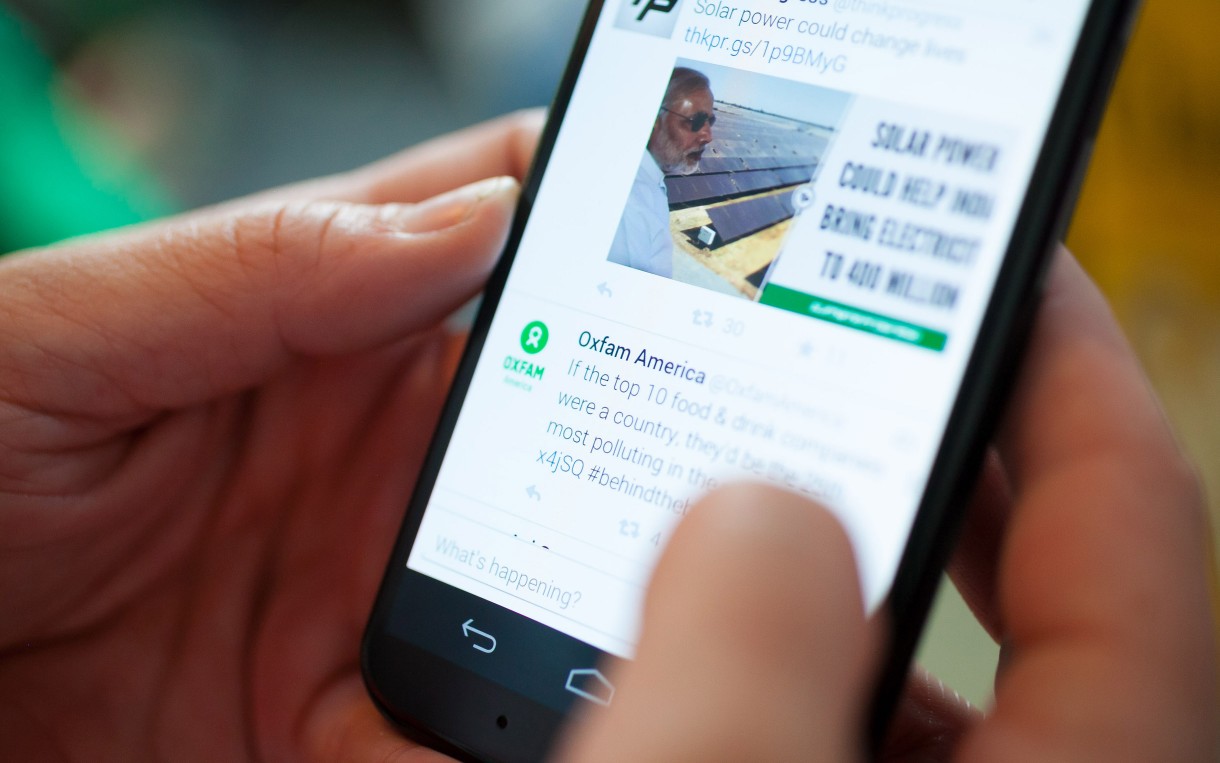Could an app tell you where your food comes from?
 Photo: Elena Bazini/Oxfam America
Photo: Elena Bazini/Oxfam America
Soon, a scan from your smartphone could reveal more about the giant companies behind the products you buy every day.
How exactly does one eat healthy and ethically? The answers seem simple, but can sometimes be hard to carry out in real life.
Take the brochure on healthy eating that I picked up at a natural food store last weekend. It was full of practical tips, but one seemed a little far-fetched: “Choose whole, unprocessed foods whenever possible. Avoid packaged foods.”
In theory, this makes perfect sense. Stocking up on heirloom tomatoes from the farmers’ market will keep you both healthy and on the right side of the karma equation. But life is much more complicated than that. And when I’m finishing up a 10-mile run, or fitting in a quick lunch between errands, or juggling a million other things … well, I’m not always reaching for a tomato. Sometimes, packaged, prepared foods are just a necessity.
And I’m not the only one. At the Bonnaroo Music Festival last month, I noticed visitors to Oxfam’s booth crowding around this infographic, which identifies the 10 giant food and beverage companies behind many well-known supermarket items. Everyone wanted to know more about the brands that are part of our everyday lives, since it’s inevitable that we’ll grab the occasional pint of ice cream or bag of chips along with that fresh produce.
So if we all buy this stuff, how can we make the right choices? It helps to have knowledge: about the companies that make these products, their policies on poverty and hunger issues, and, if necessary, how we as consumers can help them do better.
That knowledge could even come from technology. My colleague Ben Grossman-Cohen was just quoted by Andrew Revkin in The New York Times’ Dot Earth blog as part of a discussion about how to improve labeling and transparency for food products:
“There are actually a number of groups like OpenLabel, GoodGuide and Buycott that are already exploring the world of apps that allow consumers to scan bar codes to find out what’s in/behind the labels of the products they buy. Ultimately somebody will figure out how to do it really well. The main challenge seems to be figuring out how much information to include and then actually making the tools useful and user friendly. …
A great existing resource to know whether PepsiCo/Tropicana are operating sustainably is Oxfam’s interactive Behind the Brands rankings, which rate companies for how sustainable and responsible their corporate policies are. Looking at Tropicana’s scores you’ll see that our assessment of PepsiCo found that their policies on farmers and workers issues are “poor” while they get slightly higher marks for how they address their impacts on climate change and land. If you really want to dig into the details you can read through our massive open data sheet that shows how those scores were created.
It’s not a perfect tool, but certainly gives a good overview of some of the key issues related to how the companies that own the brands we buy are operating. We are also exploring how to bring our data to consumers everywhere via a bar code scanner. In fact, the data behind our scorecard is already being used by a group called eLabel in their bar code scanning app for Woolworths customers in South Africa. Hopefully consumers everywhere will have that opportunity someday soon.”
Like many of you, I’ll be watching to see when this technology will make its way onto our smartphones and into our grocery carts. And in the meantime, you can still use your power as a consumer to make a difference by calling on food giants General Mills and Kellogg to reduce their greenhouse gas emissions.